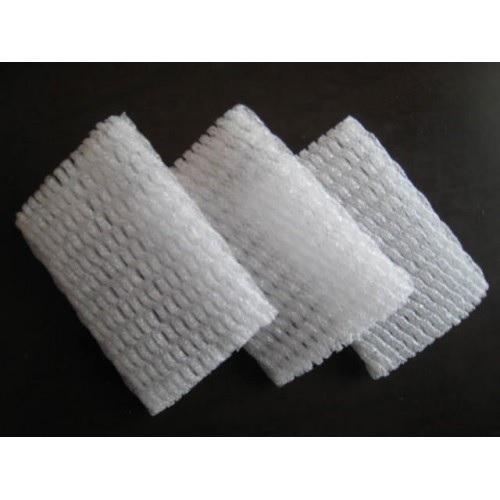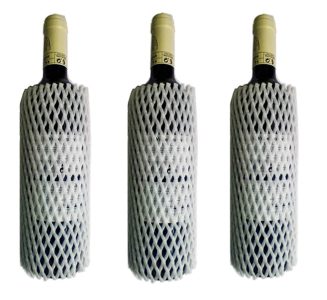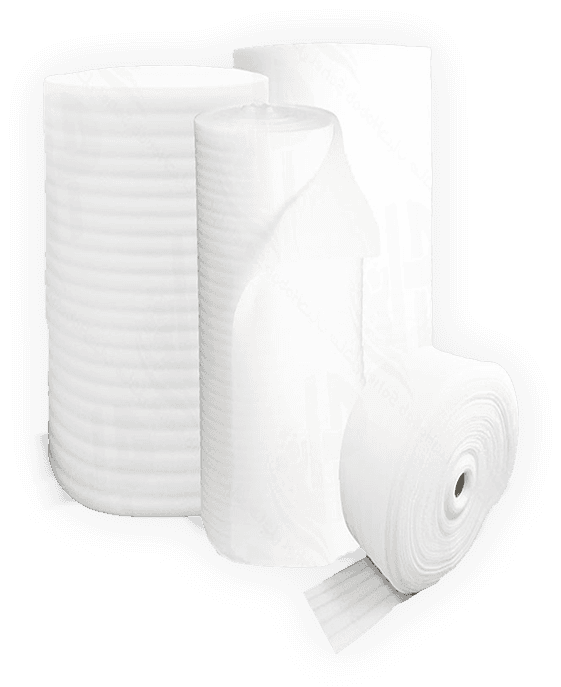Polyethylene mesh foam
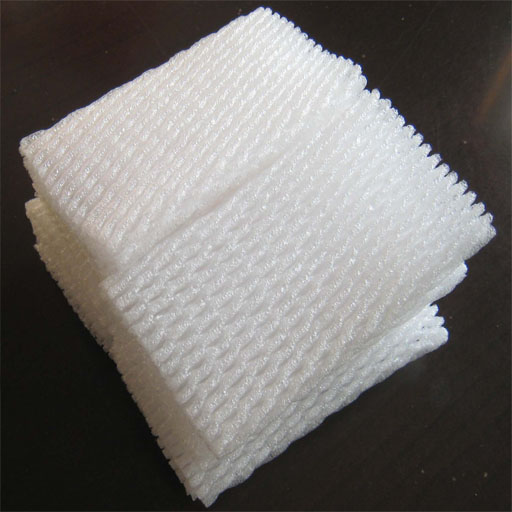
Polyethylene Mesh Foam is a type of foam material produced from polyethylene. This type of foam has a cellular structure with a mesh texture, which makes the foam light and flexible. Therefore, polyethylene mesh foam is used as a reflective material, thermal insulation, sound insulation, as well as a protective and packaging material.
Polyethylene mesh foam has good physical properties, including lightness, impact resistance, flexibility, electrical insulation and thermal insulation. Also, this type of foam is waterproof and has good resistance to chemicals and oils.
The following are the uses of polyethylene mesh foam:
– Packaging of electronic products, glasses, delicate items and other sensitive items in transportation.
– Insulation in construction industry and manufacturing of insulation parts.
– Use in the automotive industry to prevent noise and vibration.
– Making shock-resistant packaging for shipping goods.
– Use in sports and physical exercises as a protector and shock absorber.
In general, polyethylene mesh foam is used in many industries and applications due to its suitable physical and chemical properties.
What are the uses of polyethylene mesh foam?
Polyethylene mesh foam is used in many industries and applications due to its physical and chemical properties. Some of the uses of polyethylene mesh foam are:
- packing: Polyethylene mesh foam is used to package and protect sensitive products such as electronics, glass, cosmetics, delicate appliances and others. This foam is used as an intermediate protective layer in shipping packages and prevents damage to the contents.
- Insulation: Polyethylene mesh foam is used as a thermal insulation and sound insulation in the construction industry. This foam is placed on the surfaces of walls, ceilings and floors to insulate heat and reduce sound penetration.
- Automotive industry: Polyethylene mesh foam is used in the automotive industry to reduce vibration and noise in car parts. This foam is placed in the panels of doors, seats, windows and other interior parts of the car.
- Transport protection and packaging: Polyethylene mesh foam is used as shock protection in transport packages. This foam is placed in the form of protective layers inside boxes and cartons to prevent damage to the contents during transportation.
What are the advantages of using this foam?
Using polyethylene mesh foam has many advantages. Some of the advantages of using this foam are:
- Lightness and flexibility: Polyethylene mesh foam is light and flexible, which allows for ease of use and flexibility in a variety of applications. This foam can be easily cut, turned, bent and formed, and it can be easily transformed into different shapes.
- Impact resistance: Polyethylene mesh foam has good impact and shock resistance. This feature makes it act as a protective layer in the packaging and shipping of sensitive products, including electronic products and glass.
- Electrical and thermal insulation properties: Polyethylene mesh foam has good insulating properties against electricity and heat. This foam is used as a thermal insulation in buildings to prevent heat transfer and unwanted cooling or heating. Also, in some applications, such as the electronics industry, it is used as an electrical insulator.
- Waterproof and chemical resistance: Polyethylene mesh foam is waterproof and has good resistance to moisture and water. Also, this foam has good resistance to most chemicals such as oils, detergents and acids, making it a durable material.
What kind of machine is the polyethylene mesh foam production machine?
Polyethylene mesh foam production machine is known as a type of foam maker. One of the devices used to produce polyethylene mesh foam is the Extrusion Foam Machine.
The extrusion foam machine works based on the extrusion process. In this process, polyethylene is placed as an adhesive material in the feeding device and is melted as a heating unit. Then, through the propulsion system, foaming chemicals are added to the polyethylene and form a homogeneous mixture.
Then this mixture is transferred to a mesh mold. The mesh mold is designed as a disc with small holes on its surface. The foamy polyethylene mixture comes out of the holes of the mesh mold and by applying heat and cold transfer as a rapid diffusion process, it is compacted and becomes polyethylene mesh foam.
The extrusion foam machine has precise controls to adjust the temperature, pressure and speed of foam material extrusion. These controls help regulate the quality and characteristics of the polyethylene mesh foam.
The most important parts of the extrusion foam machine are the material feeding device, the heating unit, the propulsion system, the mesh mold and the control and monitoring system.
What is the relationship between polyethylene foam and the environment?
Compared to some other foam materials, polyethylene mesh foam performs better in terms of impact on the environment. Below we examine the effects of polyethylene mesh foam on the environment:
- Recyclability: Polyethylene mesh foam can be recycled and recycled. This means that after use, it can be collected and recycled back into other polyethylene products. This helps to reduce the consumption of new materials and waste disposal.
- Stability against environmental conditions: Polyethylene mesh foam is highly resistant to environmental conditions such as humidity, water, sun and chemicals. This feature makes the polyethylene mesh foam last longer and requires less replacement.
- Reducing the consumption of natural resources: The use of polyethylene mesh foam in the packaging and protection of products improves their stability and useful life. This can lead to a reduction in the consumption of natural resources such as wood and paper.
- Weight loss and energy: Polyethylene mesh foam is lightweight and lighter than traditional materials such as metal. This lighter weight saves transportation energy and uses less resources.
- long life: Polyethylene mesh foam has a long life and is very resistant.
What should be considered when producing this tribe?
Some things to consider when producing polyethylene foam netting are:
- Selection of raw materials: It is very important to choose polyethylene materials with suitable characteristics for the production of mesh foam. Features such as quality and pollution of polyethylene, foaming compounds and amounts added to raw materials should be considered to improve the properties of mesh foam.
- Production process conditions: Important parameters such as temperature, pressure and speed in the production process of mesh foam must be carefully adjusted. These parameters affect the formation and properties of mesh foam and their incorrect adjustment can lead to low quality or problems in the foam produced.
- Lace template design: The mesh mold or extrusion mold must be designed in such a way that it has the ability to distribute the foam material uniformly and homogeneously. Also, the size and shape of the holes of the lace mold must be carefully determined in order to produce lace foam with the desired properties.
- Quality Control: Proper quality control process must be applied during the production of polyethylene mesh foam. This includes monitoring the process parameters, checking the quality and characteristics of the foam netting produced, and the relevant tests to ensure compliance with the required standards.
Polyethylene mesh foam
What specifications should this product have?
The storage place for polyethylene mesh foam should have the following specifications:
- Dry and cold: It is better to store polyethylene mesh foam in a dry and cold environment. Moisture reduces the properties of the foam and at high temperatures the shape of the foam may change.
- Sun protection: Sunlight can change the color and decompose the polyethylene material. Therefore, mesh foam should be stored in an environment protected from sunlight, such as dark rooms or covered boxes.
- Free space without pressure: Mesh foam should be kept in a free space without pressure. High pressure can lead to foam failure and change its structure.
- Apart from contaminated chemicals: Polyethylene mesh foam should be kept away from contaminated chemicals and alkalis. These materials may react with the mesh foam and affect its properties.
- Classification and order: For optimal maintenance, it is better to keep foam net in proper classification and orderly. This will help you find the foam lace you need easily and prevent damage and unwanted bending.
- Impact protection: To prevent damage and bending of the mesh foam, you can use protective methods such as packaging in strong boxes.
How is the market of polyethylene foam mesh in Iran?
The polyethylene mesh market in Iran has grown significantly as one of the widely used packaging and protection materials. The consumption of polyethylene mesh foam in various industrial and commercial sectors, including transportation, packaging, construction, electronics, household appliances and other industries, has seen a favorable growth trend.
The polyethylene mesh market in Iran is supplied by domestic producers and foreign importers. Domestic producers in Iran produce and supply polyethylene mesh foam, and due to the growth of various industries, the number and variety of producers has also increased.
The advantages of polyethylene mesh foam, such as lightness, resistance to moisture, breakage and shock, heat and sound insulation, recyclability and low cost, have made it the focus of many companies and industries. Also, the use of polyethylene mesh foam as a suitable alternative to traditional materials such as metal and wood has increased the demand in the market.
However, the level of competition in the polyethylene foam mesh market is also high, and the competition between domestic producers and foreign importers takes place in attracting customers and marketing. Due to the growth of various economic sectors and the need for packaging and protection materials, the polyethylene foam mesh market in Iran seems to be increasing significantly.
What are the factors affecting the price of this product?
Factors affecting the price of polyethylene mesh foam are:
- Raw material: The price of polyethylene raw materials and foaming compounds used in the production of mesh foam has a direct effect on the final price of the product. Changes in the prices of raw materials can increase or decrease the price of mesh foam.
- Production Process: The production process of polyethylene mesh foam includes different steps, each of which can have an effect on the price. Costs related to production equipment, labor, energy, savings and productivity are among the factors that determine the price.
- Design and dimensions: The dimensions and design of the mesh foam can have an effect on the price. The production of mesh foam with different dimensions and sizes requires different equipment and molds, which can affect the price.
- Technical specifications and properties: The technical specifications and properties of polyethylene mesh foam, such as thickness, cell type, how the cells are distributed, resistance to shock and pressure and other properties, can have an effect on the price. Mesh foam with higher properties and characteristics usually costs more.
In what models is this product produced?
Polyethylene mesh foam is produced in different models and shapes to meet the needs of different industries and applications. Some common models of polyethylene mesh foam are:
- Regular lace: This mesh foam model has mesh cells that are regularly located on the surface of the foam. This type of mesh is suitable for use in packaging, separators, stiffeners and general purposes.
- Double layer lace: In this model, two layers of mesh foam are connected with mesh cells. This design of mesh foam, in addition to more strength, also increases the amount of heat and sound insulation.
- 3D mesh: The 3D foam mesh has a 3D structure with mesh cells in three different directions. This foam mesh model is suitable for applications that require high strength and uniform pressure distribution, such as the automotive and construction industries.
- Soft lace: Soft mesh is foam mesh with open and soft mesh cells. This type of mesh foam is suitable for use in industries that require flexibility and plasticity, such as the electronics industry and household appliances.
Also, polyethylene mesh foam can be produced in different sizes, thicknesses, roll sheets, cell types and skins to meet the specific needs of customers.
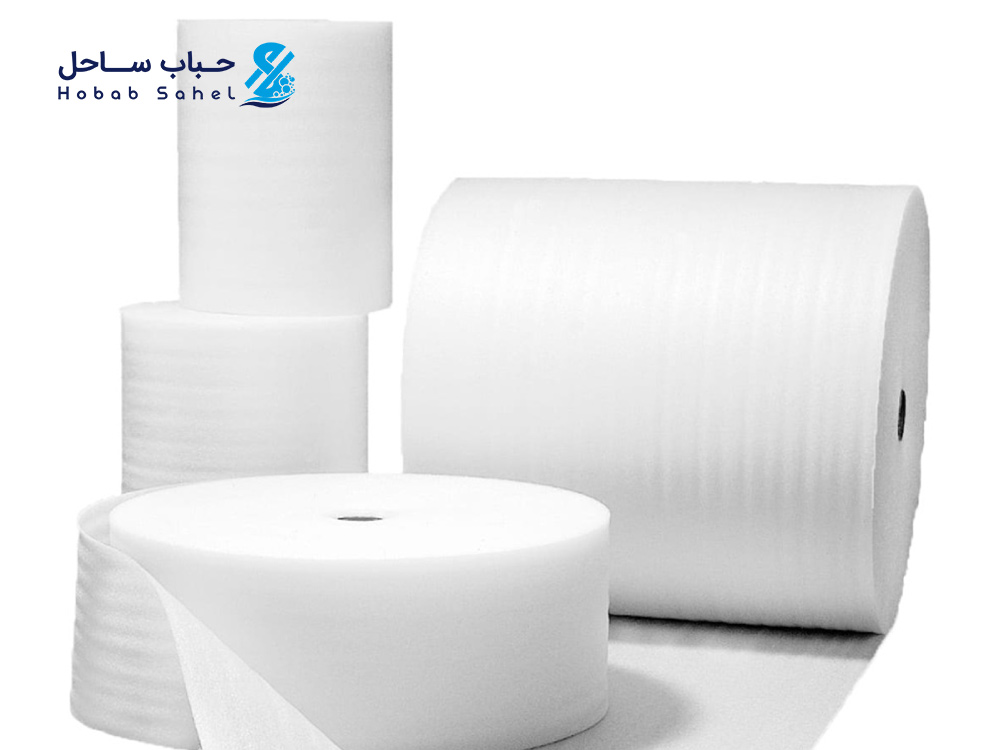
Sale of polyethylene foam in Tehran
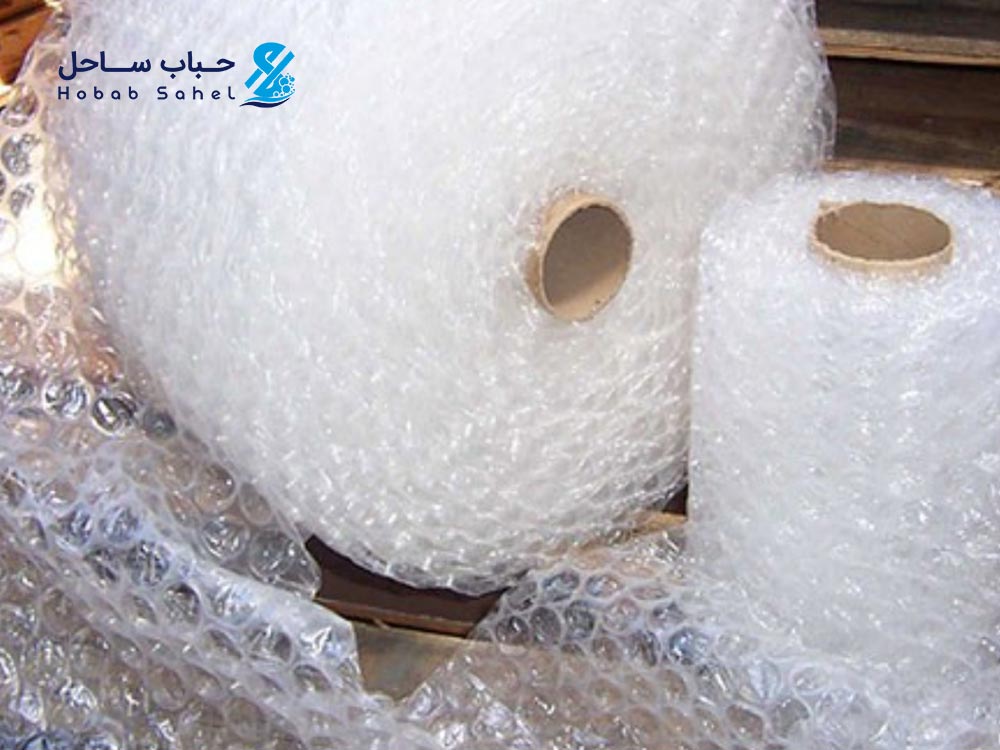
Production of high quality bubble nylon

What is the best nylon shock absorber for packing?

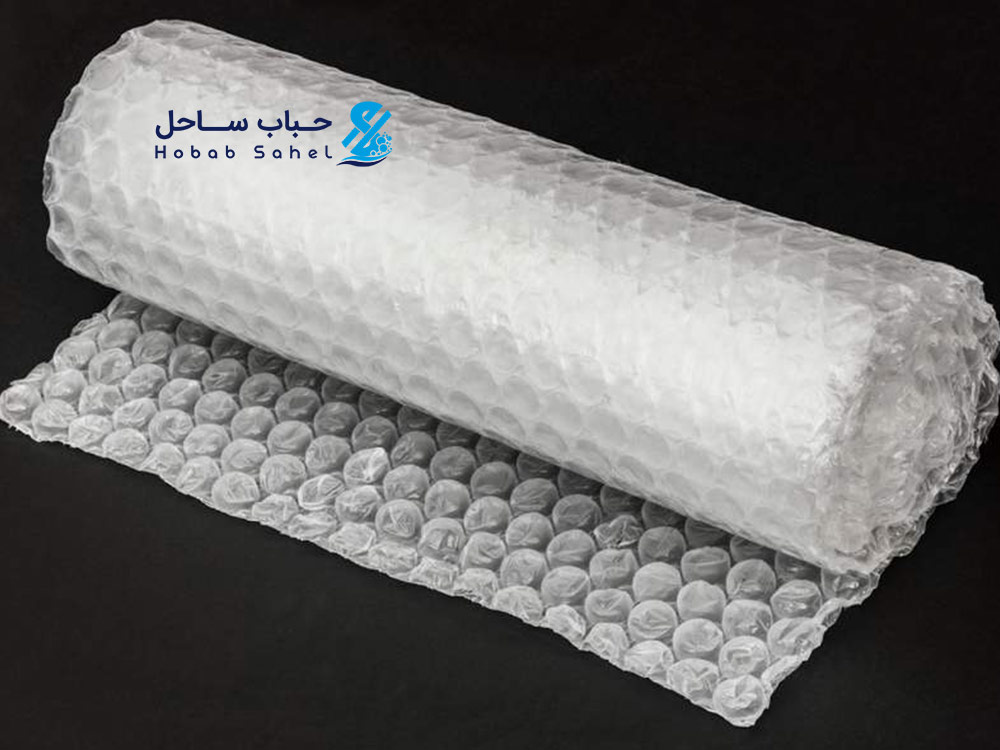
- +982155246733
- +982155246899
- +989302222003
- +989302222003
- @hobab_sahel
- info@hobabesahel.com
- No. 5, end of the boulevard, Maher Blvd
Maybe these articles will be useful for you.

